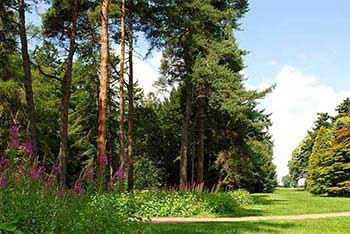American interpretation
Something I never thought I would do in my life is accompany a seed collecting trip. Indeed I’m not even sure I knew they still happened before I started work at the arboretum!
In my mind they were a story of the past: intrepid adventurers spending years clambering through inhospitable terrain; navigating their way through civil wars and surviving through some of the worst weather imaginable. All to get to that one tree; that one tree they’ve dreamed of discovering during their tumultuous journey and from whom they would take seeds, in the hope that they would return to their native shores with a jewel in their pockets ready to grow into a majestic beauty for everyone to see.
And how do we know all this? From various records, we are able to piece together their journeys and learn stories about working in such remote, undiscovered areas.
I work for the Education Department, and my role specifically is to support interpretation for the Westonbirt Project. I spent a lot of time working on the exhibition in our new Welcome Building, and as such I delved into the historic records which make Westonbirt what it is today. What you inevitably find is that many historic documents have been lost to time, and plant hunter stories are no exception.
Modern day plant collecting trips are just as important and exciting as those of old (if a little more focused on health and safety…); and the current expedition to East USA will have records galore thanks to two cameras, an audio recorder, a microphone, a tripod and a multitude of spare batteries and SD cards!
I’ve flown out to Missouri where I was met by three modern day plant collectors! Westonbirt’s Dan Crowley and Rich Townsend, along with Jon Harmer from RGB Kew Wakehurst Place who are collecting seeds to further enhance our Plant Heritage National Collections.
I have joined them for 10 days to document how collecting is done; who records what; how seeds are cleaned; chats with local experts; the list is endless! They will act as an important archive for future interpretation, and help to update some of our exhibits in the Welcome Building.
So keep an eye out for my next blog... I will keep you up to date with any interpretational gems!
Susanna
Interpretation Support Officer
